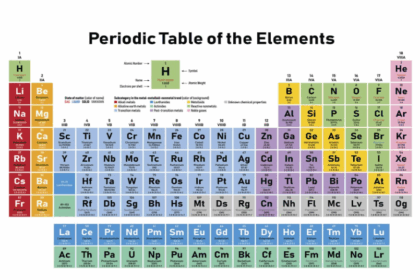
Republicans’ growing confidence about next year’s midterm elections is attracting a stampede of new GOP candidates for House races.
Nearly 1,000 Republicans have filed candidacy papers in 379 of the 435 House districts across the country, including 196 who are women and 179 who are veterans, according to the National Republican Congressional Committee.
The crush of new GOP candidates is a marked increase from the 842 GOP candidates who had entered House races at this point in 2019, according to data that the NRCC, which works to elect House Republicans, shared with The Washington Times
“In this environment, no Democrat’s seat is safe and vulnerable House Democrats have a choice to make over Thanksgiving. Retire or lose,” Rep. Tom Emmer, the NRCC chairman, said in an interview. “We expanded the list to 70 seats because we believe that anybody who’s in a seat that Joe Biden might have won by 10 points a year ago, they’re vulnerable. They’re at risk.”
The new crop of Republican contenders reflects the party’s quest for more diverse members and builds on the success of 2020 in which women and people of color drove unexpected GOP gains in the lower chamber.
The House Republican candidates include 177 who are people of color, up from the 131 at this time in 2019. There are 196 GOP women in House races compared to 162 at this time in 2019, according to NRCC data.
The Republican candidates in House races also build on the party’s success recruiting veterans. The House Republicans have 179 veterans running so far, compared to 170 at this time in 2019.
Recent elections emboldened Republicans and gave Democrats reason to fret.
Democrats suffered sweeping losses in the Nov. 2 elections in Virginia, which had been trending blue for more than a decade. Republicans scored wins from the gubernatorial race down into retaking the majority in the House of Delegates.
Elsewhere, Democrats lost a state Supreme Court seat in Pennsylvania and several municipal offices in New York, and they watched Republicans flip seven seats in the Democrat-controlled New Jersey Legislature.
Mr. Emmer, Minnesota Republican, said his candidates will build on the momentum by campaigning on kitchen table issues next year, including with policies to help the economy and beat back inflation and high crime.
Mr. Emmer said rising crime across the U.S. is the “direct result of their defund the police insanity.”
They also will hit Democrats on illegal immigration at the Mexican border and the Biden administration’s chaotic pull-out of Afghanistan.
The biggest issue, however, is education, Mr. Emmer said.
“The education issue carries. It really does. It’s more about parents who want to be involved in their child’s education, and they’re being told by Democrats and their powerful teachers unions, ‘No, we got this, and you don’t need to be involved,’” he said.
Democratic incumbents also see a GOP tsunami coming and are getting out of the way. As of Friday, 17 Democratic House members had announced they would not seek reelection, compared with 12 Republican House members who are calling it quits.
Democratic Congressional Campaign Committee spokesman Chris Taylor said his party is ready to fight to hold onto the House majority, and their candidates have a strong case to make to voters.
“We’re going to go high and low making sure every American voter knows that House Democrats delivered for working families while House Republicans voted twice to block the Biden Child Tax Credit which 90% of families with kids are receiving,” he said. “We’re going to remind voters that the vast majority of extremist House Republicans voted against making a once-in-a-generation investment in American infrastructure. Democrats delivered and now millions of Americans will have access to good-paying union jobs building America.”
Still, the Democrats’ problems are reflected in the low approval ratings for the party’s leaders.
President Biden’s approval rating sits at 41% and Vice President Kamala Harris is at an abysmal 28%, according to a USA Today and Suffolk University poll.
Midterm electoral history is unkind to the party in the White House. The party of a president with an approval rating under 50% loses an average of 37 House seats in midterm elections, according to Gallup.
The average number of seats lost is 14 for presidents with approval ratings above 50%. Two presidents gained House seats for their party in their first midterm election: Franklin Roosevelt in 1934 and George W. Bush in 2002.
House Democrats are intent on adding Mr. Biden to the list.
The DCCC, which is the House Democrats’ campaign arm, spent an initial $30 million hiring local community organizers, launching targeted advertising campaigns aimed at communities of color, and establishing voter education initiatives.
The Democrats also are working to counter the GOP’s effort to label them far-left extremists, and Democrats plan to target the message on social media platforms usually used by communities of color.
“It’s not enough to just wave it away and pretend it doesn’t matter. We need to take these lies and distortions seriously,” DCCC Chair Sean Patrick Maloney, New York representative, said recently on National Public Radio. “We need to have a robust effort to counter that disinformation, and we need to do research so we understand exactly how to do that without turning off our most reliable voters.”
Democrats plan to run on the benefits of the recently enacted bipartisan infrastructure package, and they also want to pass Mr. Biden‘s roughly $1.75 trillion social welfare and climate bill to get a boost next year.
“We need to make sure that we get it out to the public as to what’s in it,” said Rep. Karen Bass, California Democrat. “And then we have the other bill to do. And so I think that our fortunes will change.”
However, large, signature legislation passed by presidents before the midterms does not guarantee a bounce for their party’s lawmakers.
In 2010, House Democrats lost 63 seats after President Obama signed into law the Affordable Care Act. In 2018, Republicans lost 40 seats after President Trump signed the Tax Cuts and Jobs Act.








